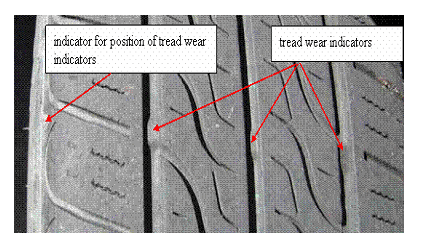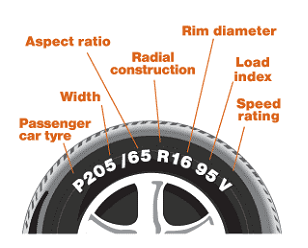Also called tyre tread designs, tyre tread patterns are the arrangement of continuous ribs, independent tread blocks, or grooves, molded into the tread to fine-tune noise, handling, traction and wear. Tyre treads patterns feature different basic designs to help them meet anticipated driving conditions.
Symmetric Tread Patterns
A symmetric tread pattern is the most common and features continuous ribs or independent tread blocks across the entire tread face. Tyres featuring symmetric tread patterns allow using multiple tire rotation patterns.
Asymmetric Tread Patterns
An asymmetric pattern is designed to blend the requirements of dry grip and water dispersal/snow traction where the tread pattern changes across the face of the tire. An asymmetric tread pattern usually incorporates larger tread ribs/blocks on the outboard side to increase cornering stability on dry roads by offering greater contact area. Tyres featuring asymmetric tread patterns allow using multiple tyre rotation patterns.
Directional (Unidirectional) Tread Patterns
A directional (also called a unidirectional) tread pattern is designed to roll in only one direction. It incorporates lateral grooves on both sides of the tyre’s centerline that point in the same direction and result in v-shaped tread blocks. These grooves enhance hydroplaning resistance at high speeds by pumping water more efficiently through the tread pattern. Unless they are dismounted and remounted on their wheels to accommodate use on the other side of the vehicle, directional tyres are to be used on one side of the vehicle and are intended to be rotated from the front axle to the rear axle. If different tire sizes are used on the front vs. rear axle, the tires become location-specific and prohibit tire rotation unless remounted.
Asymmetric and Directional Tread Patterns
Asymmetric and directional tread patterns have v-shaped tread grooves that are offset compared to the centerline of the tire. Tyres featuring asymmetric and directional tread patterns must be treated as directional tyres for tyre rotation. However, if different tyre sizes are used on the front vs. rear axle, they become location-specific and prohibit any tire rotation possibilities.

